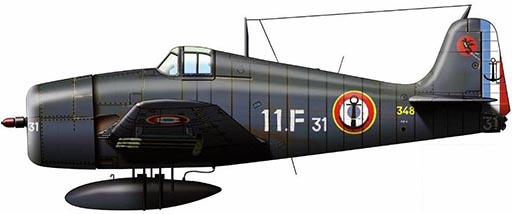|
|
Flotille 11F "Les Furieux" |
|
|||
|
|
|||||
|
Callsign : KIMONO (Kimono starts with “K”, the 11th letter in the alphabet) |
|||||
|
Flotille 11F is the oldest French naval aviation fighter formation, with one of the most prestigious pasts. It is the heiress of the AC1, the first naval aviation fighter squadron, created on 1 March 1919 in Saint-Raphaël, itself created from the Escadrille d'Hydravions de Chasse B102 which distinguished itself during the First World War. The main mission of 11F is sea and land assault, by day and by night. Flotille 11F, and its sister-flotille 12F, are the only naval aviation units in the world with a nuclear attack capability. They are part of the Nuclear Naval Air Force (Force Aéronavale Nucléaire), which is one of the components of the French nuclear deterrent. |
|||||
|
Consice (Pre-11F) World War 2 History At the outbreak of hostilities in September 1939, Escadrille de Chasse de l’Aviation d’Escadre AC1 was equipped with Dewoitine 373 & 376, old equipment with an unreliable engine. The transformation on Potez 631 has started and it is on this aircraft that AC1 takes part in the battle of France where it wins two citations. On 2 March 1940, Flotille 1 de Chasse (F1C) was created with 2 squadrons : AC1 & AC2. 25 May 1940, Dewoitines D.520 were assigned to the Aéronavale to replace the Potez 631s. Delivered to Cherbourg, they had to quickly reach Rochefort then Hyères and finally North Africa via Bône. Finally Fighter Flotille 1F (1AC and 2AC squadron) arrives in Sidi-Ahmed (Bizerte) in Tunisia. Then after the attack on Mers-El-Kébir (Operation Catapult) on 3 July 1940, it moves closer to the French Fleet and settles in Tafaraoui (now Lartigue) near Oran. During 1941, the D.520 of 1F will carry out protection missions (in particular of the battleship Provence) from Oran or Sidi-Ahmed. AC1 received its first Dewoitine D.520 in Toulouse on 25 June 1940. That same day Flotille left for Bône in North Africa. On 1 August 1940, F1C was renamed 1e Flotille de Chasse (1FC) and divided into 2 squadrons : 1AC and 2AC. Between 6-14 July 1941 it was engaged against the allied forces in Syria and Lebanon (Operation Exporter). 1AC squadron lost 3 aircraft and 1 pilot was killed but it is credited with 8 aerial victories (6 Bristol Blenheim and 2 Curtiss Warhawks). On 5 January 1942 23 aircraft of the 1F will participate in the protection of Dunkirk, moving from Mers-El-Kébir to Toulon. Fearing an invasion of Morocco by the Germans, the 1F was assigned to Port-Lyautey, near Rabat. The landing of the allies in North Africa, on 8 November 1942 (Operation Torch) provoked new clashes and new losses. D.520s will first attack the landing craft defended by the AAA and then return to Port Lyautey, in Morocco. This is where American Wildcats will attack the airfield and destroy almost all of 1FC (loss of 19 Dewoitine D.520s). 1F withdrew to Agadir to be reconstituted. In June 1943, she flew to Thiersville (Algeria) because Lartigue was occupied by the Americans. On 1 October 1943 the name of all Naval Aviation units changed so Flotille 1FC became 1F. The English and American designations of squadrons for flotilles are no longer used except in correspondence with the Allies. In February 1944, she settled again in Lartigue. For lack of aircraft F1 ceased to exist on 15 May 1944; pilots and some mechanics are assigned to Free French Air Force Fighter Groups (GC I/4, III/6, I/7, II/7) and participated in the second Battle of France; others will join the new VFB-1 squadron which has just been created by the Americans. |
|||||
|
Consice 11F History From August 1951 to June 1952, 1F carried out a campaign in Indochina aboard the Arromanches (R95), equipped with the Grumman F6F-5 Hellcat. The current 11F Flotille was officially created on 20 June 1953 on the basis of the 1F Flotille, from which it took over the personnel, equipment, missions and traditions. In September 1953 she was sent to fight in Indochina, where she took part in the defence of the Diên Biên Phu stronghold. She gained three additional citations and flew 344 missions totalling nearly 5,000 hours until April 1954. Transformed on SNCAE Aquilon (their first jet) in April 1955, she participated in operations in Algeria in 1958 and 1959 before ensuring the defence of Bizerte in July and August 1961. 11F was disbanded for the first time on 17 January 1955 and re-armed on 4 April 1955. Disbanded again on 18 April 1962, it was reconstituted on 1 April 1963 and occasionally appeared on Étendard IVM. The first landings performed by 11F on the aircraft carrier Clemenceau (R91) took place in September 1963. In May 1967, the 11F left (Base d’Aéronautique Naval) BAN Hyères Le Palyvestre to settle on BAN Landivisiau. Equipped with Dassault Super-Étendard from September 1978, the 11F then received the maritime and land assault mission, by day and by night. Its planes are armed in particular with Exocet AM39 anti-ship missiles, and capable of carrying the AN-52 nuclear bomb.
They participated in Operation Olifant in Lebanon in 1983. (On October 23, 1983, two truck bombs struck barrack buildings of the Multi-National Force in Beirut, killing 307 persons, mostly US and French military personal. In retaliation for the attacks, France launched an airstrike in the Beqaa Valley against alleged Islamic Revolutionary Guard Corps targets.) In 1989, the ASMP cruise missile replaced the AN-52 for nuclear strike missions.
Flotille 11F was deployed in the Adriatic from January 1993 to February 1995 for mission Balbuzard (The aim of this operation was to help free hostages held on the outskirts of Sarajevo, to ensure the safety of the French elements of UNPROFOR and to facilitate the possible disengagement of forces on land) in former Yugoslavia. From the end of 1995, it received modernized Super-Etendards capable of dropping and guiding laser-guided bombs. In 1999, the 11F took part in Operation Allied Force in Serbia and Kosovo, carrying out more than 400 sorties and dealing with 85 targets. Back in France, Flotille took part in the trials of the aircraft carrier Charles de Gaulle (R91) in 2000-2001 and then in its first cruises. Its Super-Etendards were modernized again, first to standard 4 and ultimated to standard 5. A deployment in Afghanistan took place from February to May 2007. End of 2010 the conversion on Dassault Rafale M(for Marine) began. On Monday, 19 September 2011, she became the second Flotille to be converted on this aircraft, the SEMs being gradually transferred to the 17F Flotille. In October 2017, four Dassault Rafale M from 11F and 12F were sent to the temporary air base (Base Aérienne Projetée) BAP Prince-Hassan in Jordan, as part of Operation Chammal (the French military operation in Iraq and Syria launched to help curtail the expansion of the Islamic State of Iraq and the Levant and to support the Iraqi Army)
Since then 11F has participated in many international operations, missions and exercises around the globe, like f.e. Operations Antares and Jeanne D'Arc. |
|||||
|
Lineage Escadrille de Chasse de l’Aviation d’Escadre AC1 from 1 March 1919 Escadrille d'Aviation C10 from 1922 Escadrille d’Aviation 7C3 from 1925 Escadrille d’Aviation 7C1 from 1926 Escadrille d’Aviation AC1 from 1938 Escadrille d’Aviation 1AC from 1940 Escadrille d’Aviation 1C from 1943 1ère Flotille de chasse (1FC) (2ème) from 1 October 1945 Flotille 1F (2ème) from 1 January 1946 Flotille 11F (2ème) from 20 June 1953 |
|||||
|
Bases BAN Cuers (October 1945-December 1945) BAN Hyères Le Palyvestre (June 1953-February 1957) BAN Karouba (Tunisia) (March 1957-January 1962) BAN Hyères Le Palyvestre (January 1962-April 1967) BAN Hyères Le Palyvestre (April 1962-May 1967) BAN Landivisiau (since May 1967) |
|||||
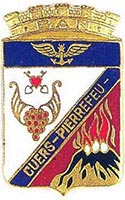
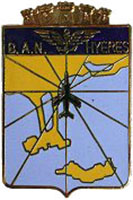
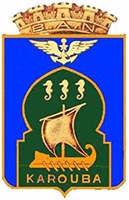
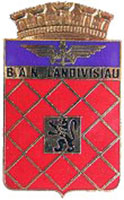 |
|||||
|
(all aircraft are to scale) |
|||||
|
Aircraft
Hanriot HD.2 (March 1919-April 1925)
Gourdou-Leseurre GL.22 ET1 (May 1925-February 1926)
Dewoitine D.1C1 (March 1926-March 1928)
Lévy-Biche LB.2 AMBC.1 (April 1928-May 1930)
Dewoitine D.1C1 (August 1928-January 1932)
Witbauld Wib.74 (February 1932-April 1938)
Dewoitine D.373 (May 1938-September 1938)
Dewoitine D.376 (October 1938-December 1939) (D.373 with folding wings)
Potez 631 (January 1940-June 1940)
Dewoitine D.520 (June 1940)
Dewoitine D.520 (June 1940-May 1944) (Vichy Air Force [or Armistice Air Force])
Douglas SDB-5 Dauntless (October 1945–April 1946)
Supermarine Seafire Mk.III (April 1946–March 1950)
Supermarine Seafire Mk.IX (April 1946–March 1950)
Grumman F6F Hellcat (April 1950–January 1955)
SNCASE Aquilon (April 1955-April 1962)
Dassault Étendard IVM (April 1963-September 1978)
Dassault Super-Étendard (September 1978-late 1995)
Dassault Super-Étendard modernized (late 1995-September 2011)
Dassault Rafale M (since September 2011) |
|||||
| Aircraft insignia | |||||
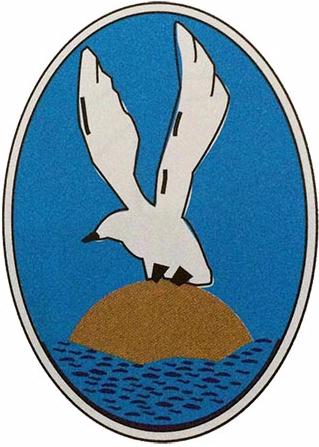 |
|||||
| Insignia used by Escadrilles d'Aviation C10, 7C3 & 7C1 | |||||
 |
 |
||||
|
In June 1930, the insignia of the winged seahorse adopted by EV1 Louis Bonnaud, commander of the 7C1 embarked fighter squadron, appeared for the first time.
|
From March 1932, the seahorse was painted on the rear of the fuselage of the 7C1 squadron aircraft, with or without a headband and with or without a landing gear. The drawing of the seahorse is modified. It is used in both black and in red colours. |
||||
 |
 |
||||
|
The winged seahorse reappeared from August 1940 in a red circle painted behind the cockpit. He remained there until 15 May 1944.
|
From March 1946, the winged seahorse was reborn. Its design is a little different from that of pre-war: the two wings are clearly seperated |
||||
 |
 |
||||
|
In May 1950, Flotille 1F aircraft showed the seahorse in a red circle and with its tail caught on a landing gear.
|
Flotille 11F was recreated in Hyères on 1 April 1963. The seahorse reappeared in the regulatory form. The badge is approved under the number M784 by decision n° 560 EMM/CAB/NP of 3 September 1982. |
||||
| Squadron patches | |||||
|
|
%20-%20Dassault%20Super-Étendard%20Modernisé%20(1995%20-%202011).jpg) |
.jpg) |
|||
| Dassault Étendard IVM (1963 - 1978) |
Dassault
Super-Étendard (1978 - 1995) Dassault Super-Étendard Modernisé (1995 - 2011) |
Dassault Rafale M ( 2011 - present) | |||
|
Unit awards |
|||||
 |
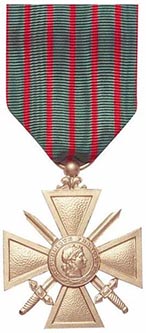 |
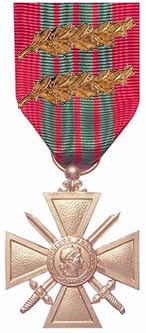 |
 |
||
| Médaille militaire | Croix de guerre 1914-1918 |
Croix de guerre
1939-1945 with 2 citations |
Croix de guerre des
Théâtres d'Opérations Extérieurs with 3 citations |
||
| (all ships are to scale) | |||||
| Carriers | |||||
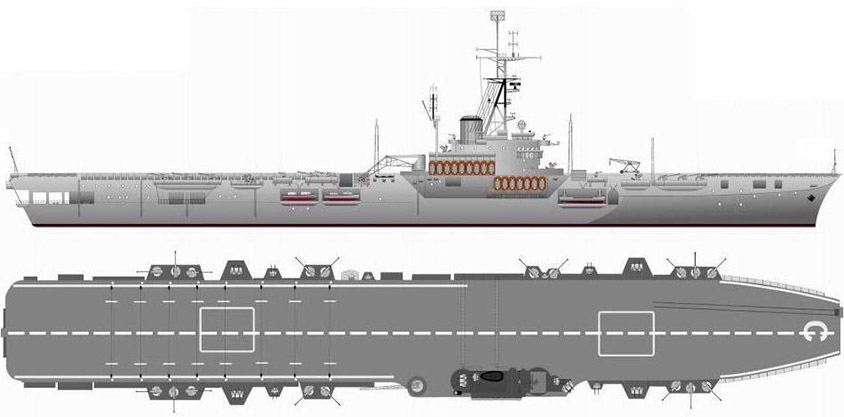 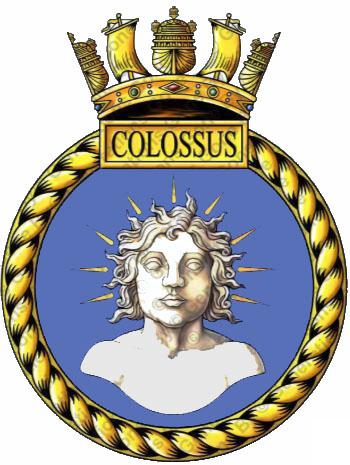 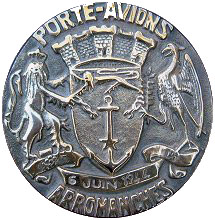 |
|||||
| Arromanches (R95), ex-HMS Colossus, 1946-1974 (light aircraft carrier, originaly built for the Royal Navy) | |||||
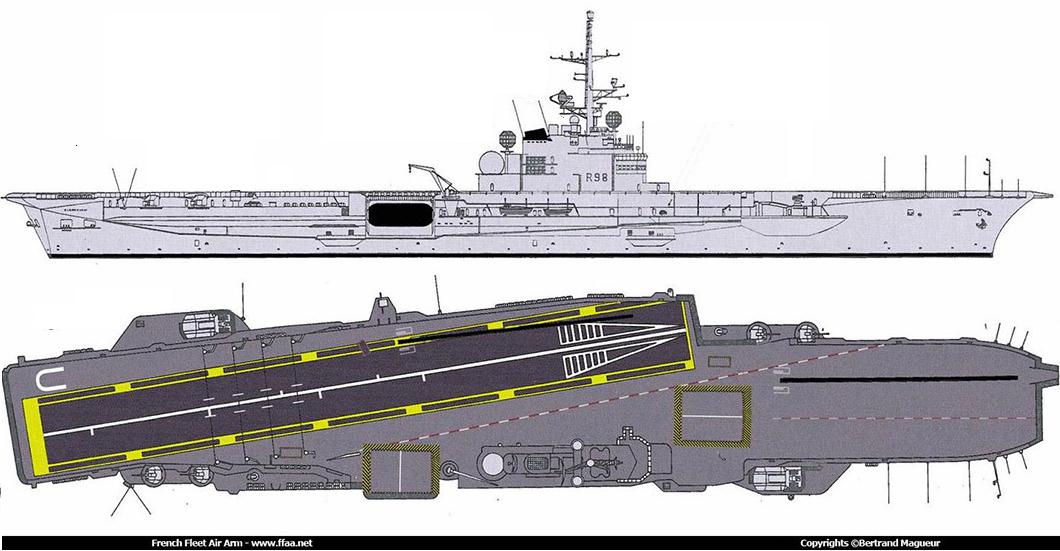 |
|||||
| Clemenceau (R98), 1961-1997 (conventionally powered aircraft carrier) | |||||
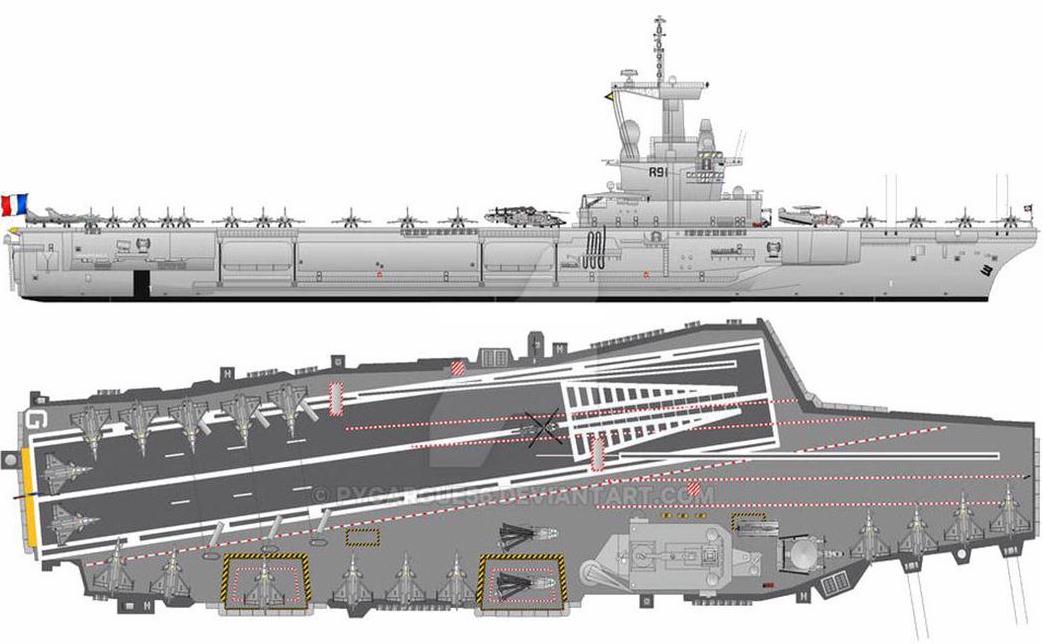 |
|||||
| Charles de Gaulle (R91), 2001-present (nuclear-powered aircraft carrier) | |||||
|
NATO Tiger Flotille 11F is a member of the NATO Tiger Association. The aircraft carrier Clemenceau (R98) was named after Georges Benjamin Clemenceau, 1841-1929, a former French minister and President who was nicknamed “le Tigre” and because of this chose a tiger as its symbol. The 11th Flottille does not have a tiger in their crest, however the Clemenceau carried the tiger crest when they where admitted to the NTA. When in 1997 the "Clemenceau" retired from service the squadron was allowed to keep their tiger-status for they had shown true tiger spirit in past years. |
|||||
|
|
|||||
|
|
|||||
|
|
|||||
|
text & picture sources : own collection & the world wide web / No copyright infringement intended : drawings, photos, etc. belong to the rightful owners. |
|||||
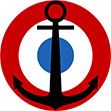
%20420cm.jpg)

.jpg)
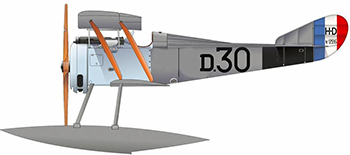
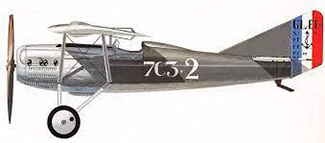
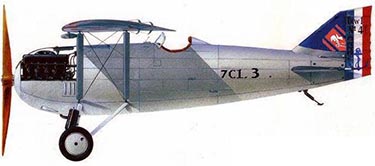

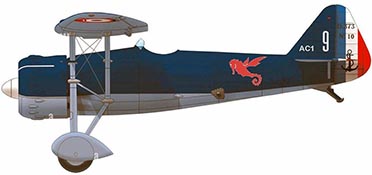
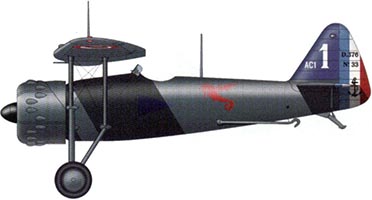

%20860.jpg)
%20860.jpg)
%20860.jpg)
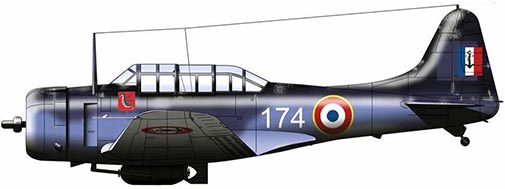
%20921.jpg)
%20921.jpg)
%20921.jpg)
